Trump responded to the TRUMP token for the first time during a meeting with SoftBank CEO, Sam Altman and others. Trump said: I don't know much about it other than I launched it, I heard it was very successful. I haven't checked. When a reporter said TRUMP has generated several billion dollars in the past few days, the president quipped, "several billion? That's peanuts for these guys"
"Trump on the TRUMP token: 'I don’t know much, but I launched it—it’s very successful.' Then calls 'several billion dollars' peanuts. Classic Trump flex!" 😄
Teelah’s so cute all cozied up in the glove box next to the stove! It’s freezing here this morning so every critter in the house is parked around the woodstove, me included!
Man, blockchain maxi's don't understand how to integrate the tech into the larger economy.
We built darkcloaks.io as an entry point for other traditional game studios to have an access point and easy API's to work with, but a bunch of Hive Maxi's want to trash our approach as not "open" enough.
They can't get past the Maxi worldview and see how things will interconnect.
This is why Hive is getting passed by other chains and things that made it unique are no longer unique.
It could seem that they're confusing open source with layer 1. Firstly, it's obviously two completely different things. Secondly everything neither can't be, should be, or is open source. With that logic how come they're not throwing away their windows/macs/androids etc?
Asking because a common concern for NFT-based games is that there still need to be 'someone' managing the game. If the database is open sourced, players can their build their own Splinterlands version if you guys suddenly disappeared.
I think Play2Earn is really hard to do right. It's very easy to lose the 'game' part of the game to become a 'chore' and once people realize how to optimize the earnings of the game, they make the 'game' part worse for everyone!
Just buying and selling cards from other users, (if I remember correctly, you also needs the spell books to be able to buy card packs as well,) and stuff like that.
Currently using the splinterlands theme since yesterday, I can see sps in the vote reward section, will I be getting sps as reward as long as I'm using the splinterlands theme and be able to claim in my wallet after day 7
Love what im hearing
I was once a regular player about 2 years back before i sold my deck.
What would u tell old, returning players to get them back onboard about the game?
People will happily pay for a game that provides the entertainment factor is really good... I stopped getting the entertainment part from splinterlands 2 years ago. Hope it becomes better, though.
Though I agree that people who have more stake in the game, (whales,) are more likely to understand what would work in a game than the average players, so...
Inleo and Splinterlands is a great idea.
Two large communities and the splinterland people are already on Hive, untapped captive market!
#golions
#splinterlands
This is the #threadcast for Day 212 of the #foodtalk on Leo, 22/1/2025. It's time for some meal inspirations and food conversation. Don't forget to use #foodtalk in your comments.
Discussion
Be part of the Food Talk Show On Leo. Here is Day 211 that leads you to the previous threadcasts.
Share your meal and food experiences.
Check out the food video summaries in the threadcast.
Share other food-related content and ask questions about food.
More about food with tips and tricks will be dropped in the threadcast. Upvote the comments you find interesting & connect with others. Let's have fun. #foodie
Because they think wasting time is productive? I don't know, I never understood it either. Glad I don't work for Apple anymore and have to deal with any of that corporate cult shit.
True. Although most days you can opt out of much of what life throws at you. Today, I don't have the option. There are plans that depend on follow through today.
"I am creating an economic simulation to give people a first-hand experience of what it would be like to live in a world without the systemic use of force." - Ross Ulbricht
The implementation may have been imperfect or naïve, but the goal of the Silk Road was to further a peaceful, voluntary world.
That's the ultimate goal of the libertarian movement, and of cryptocurrency: a voluntary and peaceful world.
There is so much more nuance involved, and this is so much harder of a goal than many of us realized. And in some ways, the world's structure will always kind of look like today with courts, police, laws, and so on.
But I believe that by following this vision, we can make our world a vastly better place.
Prime Target on Apple TV+ dives into a mathematician’s quest to crack a prime number code with global cybersecurity implications, though its intellectual premise is strong, the show leans heavily on predictable action tropes, the series struggles to balance its scholarly intrigue with overused conspiracy twists, leaving its potential untapped despite solid performances. Read More in ➡️ #linkincomments , #primetarget, #appletvplus, #tvonleo, #skiptvads , #randommedianews
Me following some "useless" strategy on X to get more attention, and then I can use that to expose hive a bit more.
The target is to get some of these users that just want to get verified followers. Then eventually critical mass will allow some of my content to be viewed and followed by "real" people. Etc etc..
For me, I earn here on $HIVE and #inleo in several ways: Posting, curation, Hive-Engine witness, and staking.
I also trade $BTC and $ETH futures, and loan out USDT on Aave.
Then of course, I am earning $DOGE $LTC and $XMR through mining and generally flip that into either Hive, USDT, or the new plan, buy more solar panels and miners!
Then I also trade crypto related stocks through a family hedge fund and earn my dollars that way, that I am turning into more miners...
$DOGE is the only memecoin for me! I can deposit it directly into Tribaldex using SWAP.DOGE then swap it for HIVE and power up, this lets me earn more HIVE/HBD and LEO through delegation!
Beastmode, but still a risky venture, with all that lending to buy BTC. If BTC drops below 65K, MSTR will have to start selling. That’s a systemic risk for BTC. At least one to take into consideration!
Nueva estrategia de Swing Trading para #cripto.
Backtesting del 2023 con 74% de winrate y un 35% de profit.
Siguiente paso: Optimizar y Forwardtesting en 2024 que podría multiplicar x3 el beneficio.
Les gustaría una serie de videos con un tutorial del proceso de creación, optimización y validación que sigo para crear las estrategias?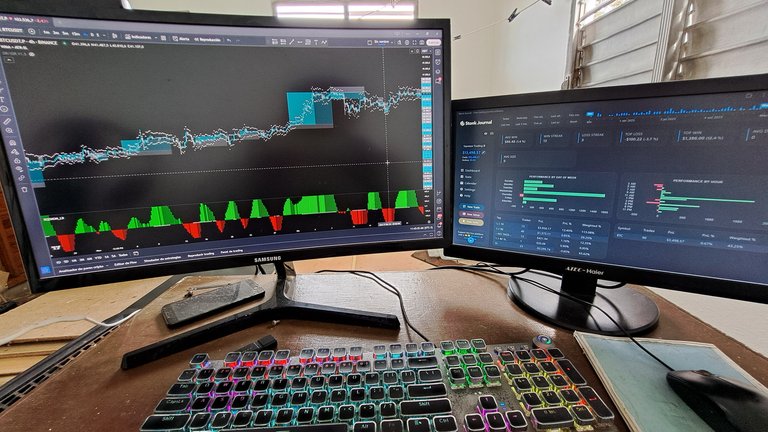
Impresionante, me gustaria saber mas!
Ya puedes verla.
Trump responded to the TRUMP token for the first time during a meeting with SoftBank CEO, Sam Altman and others. Trump said: I don't know much about it other than I launched it, I heard it was very successful. I haven't checked. When a reporter said TRUMP has generated several billion dollars in the past few days, the president quipped, "several billion? That's peanuts for these guys"
"Several billion" is most definitely not "peanuts" to me!
None of them live in the real World that we know ... 🤣
"Trump on the TRUMP token: 'I don’t know much, but I launched it—it’s very successful.' Then calls 'several billion dollars' peanuts. Classic Trump flex!" 😄
It's a good day to trade $HIVE for $LEO!!
Good move, keep stacking up.
you were right about Hive so much, I should have kept some thenway it shot from around 30 to 40 would have been decent profits for me
Still a bit higher for my cash right now, just say the word Monk and I'll believe to still buy or maybe I'll wait for a little drop first.
A really long overdue post! #splinterlands 👍

Que tengan un feliz almuerzo y una gran tarde comunidad.
#spanish
Teelah’s so cute all cozied up in the glove box next to the stove! It’s freezing here this morning so every critter in the house is parked around the woodstove, me included!
Stay warm Lions!
#inleo #bbh
A very smart cat, but his face is the best hahaha.
I agree, her face is the best😊
!BBH
what a cutie
Man, blockchain maxi's don't understand how to integrate the tech into the larger economy.
We built darkcloaks.io as an entry point for other traditional game studios to have an access point and easy API's to work with, but a bunch of Hive Maxi's want to trash our approach as not "open" enough.
They can't get past the Maxi worldview and see how things will interconnect.
This is why Hive is getting passed by other chains and things that made it unique are no longer unique.
At least InLeo is thinking of the future.
Just because one is a mechanic and knows how to fix cars does not mean that person knows crap about the automotive industry or what is taking place.
It is the same with this.
100 percent.
Good comparison
It could seem that they're confusing open source with layer 1. Firstly, it's obviously two completely different things. Secondly everything neither can't be, should be, or is open source. With that logic how come they're not throwing away their windows/macs/androids etc?
agreed.
this is the mental that is holding Hive back.
Which is why I no longer interact with them or care about them.
So it's kind of like the old man complex.... their ways are the only ways that work kinda thing? New tech is too hard to understand.
#gmfrens! Here is the Motivation, Inspiration Success #threadcast for Wednesday, 1/22/2025
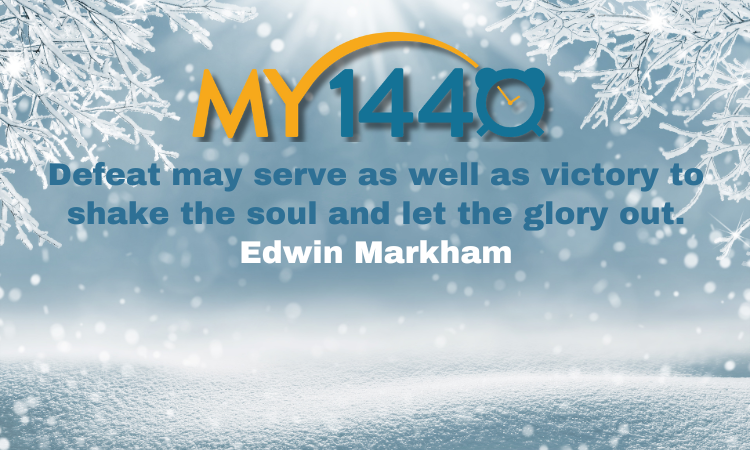
#1440minutes #motivationsonleo #inspirationonleo #successonleo #motivation #inspiration #success
Good morning thanks you for sharing 😍
Good Morning and You're welcome! Have a great day
Fearless Legacy -- 1 HOUR To BE THE BEST | The KEY To Change Your Next 10
Years
!summarize
Ali Abdaal -- Stop Wasting Time - How to Change your Life in 90 Days
!summarize
Mel Robbina -- Try It For 1 Day: Do This Every Morning to Boost Motivation & Focus
!summarize
Dan Martell -- 7 Habits That Took Me From Broke to Millionaire
!summarize
Motivmind Pro -- Self Belief is Everything | Jim Rohn | Best Motivational Speech
!summarize
Thinkark -- Jim Rohn Motivational Speech | Close The Door
!summarize
Alpha Leaders -- Simon Sinek's Advice Will Leave You SPEECHLESS 2.0 (MUST WATCH)
!summarize
Escaping Ordinary (B.C Marx) -- How to become 37.78 times better at anything | Atomic Habits summary (by James Clear)
!summarize
!summarize #jordanpeterson #Monster #success
!summarize #jordanpeterson #motivation #calm #success
!summarize #discipline #jordanpeterson #success
!summarize #kobebryant #motivation #success
!summarize #success #jimrohn #motivation
!summarize #visualization #success #mysticism
!summarize #quantum #entanglement #energy #physics #subscionsious #success
!summarize #spirit #people #world #spirituality
!summarize #howto #speaking #communications
!summarize #hermetic #wisdom #ancient #philosophy #success
!summarize #mysticism #success #spirituality
!summarize #reality #alanwatts #mysticism
!summarize #stoicism #philosophy #success
!summare #motivation
!summare #motivation
!summare #motivation
!summare #motivation
INLEO x Splinterlands is LIVE #threadcast | Chain Chatter
Join us live at noon EST (in 50 minutes) to talk all things #splinterlands and #inleo
👇🏽 Engage2Earn 👇🏽
Just do a weekly Threadcast here on INLEO, and you'll increase your exposure a lot!!
That closing remarks was on point. Those who have the greatest conviction about a project are the ones who succeed.
Play, earn and own, it's really a great game
Inleo + Maya + Splinterlands sounds great!
Thanks for the Show @yabapmatt @splinterlands and @khaleelkazi / @inleo @leofinance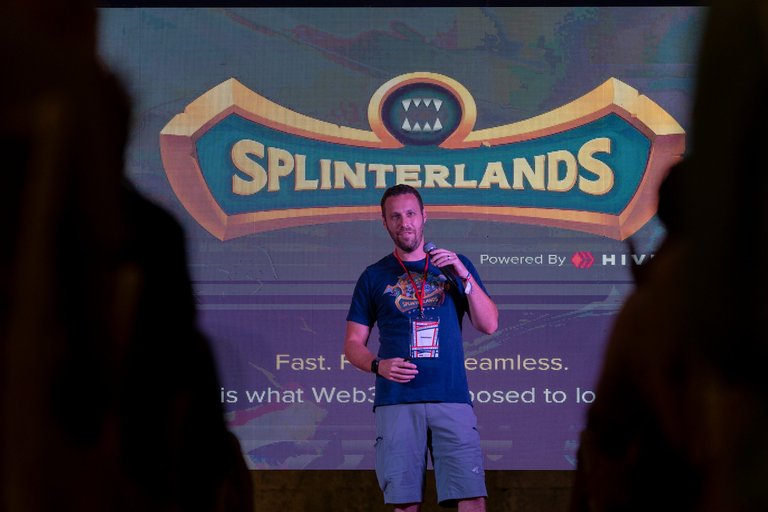
Question
Is there any other means of earning SPS tokens without playing Splinterlands? Like delegating HP. If so, how does It work?
By being active on INLEO ;)
Oh, sounds great then. You're a genius Khal. Let's go. 😊
Does this also apply to Dash?
I will try splinterlands after this AMa
Can we generate rewards? How is the process? I would like to know a little more about this association can you send me a post LINK?
My first time hearing about splinterlands
Good to be here
The crypto space is just something that changes overtime, today it's Bitcoin another day might be altcoins.
hello friends...
'm here after long time...
Yea khal, it's gonna unveil a different type of entertainment to Inleo and maybe hive blockchain at large
Question
Outside of playing games, which other ways can one earn SPS token?
I think SPS integration will contribute to the increase the MAUs of InLEO.
Great prediction 😃
https://inleo.io/threads/view/falcon97/re-khaleelkazi-f5e1ozd4?referral=falcon97
Splinterlands Discord Server: https://discord.gg/splinterlands
Question
Is/Will the game database be open-sourced?
Asking because a common concern for NFT-based games is that there still need to be 'someone' managing the game. If the database is open sourced, players can their build their own Splinterlands version if you guys suddenly disappeared.
Hi, I'm here now. Listening on Spaces! What did I miss?
I think Play2Earn is really hard to do right. It's very easy to lose the 'game' part of the game to become a 'chore' and once people realize how to optimize the earnings of the game, they make the 'game' part worse for everyone!
SPS integration is a great deal, let's go.
Include splinterlands aspect is a very good thing and that way the project will be very visible.
Unfortunately the DAO is also its own enemy and we are not seoending enough on marketing. Downside of the DAO is we are slow in decisionmaking.
Too many cooks in the kitchen
Exactly
It's a really interesting game. I use to play but got so occupied.
https://inleo.io/threads/view/winanda/re-khaleelkazi-nrbaxuy5?referral=winanda
Will anybody here help to play splinterland game.
Hello gamers
Hi! di di
Wow! 7 years strong.
Good evening from here to you all
Question
What goal do you intend to achieve with Splinterlands?
Hi! I'm ready!
@khaleelkazi we can earning $SPS or $LEO with Splinterlands? 👀
What projects can @khaleelkazi propose to us?
MAYBE SOME SPELL BOOK OR DELEGATION IN $SPS?
Happy to know there are still that many players playing Splinterlands... 50k daily battles? I wonder how many of these are bots/against bots.
I haven't tried Splinterlands but now it's in partnership with INLEO, I would love to know how it works for the love of INLEO.
spreading some follows on ze #twitter
It's good to see real players around, at least we know a bunch that is already publishing on Inleo haha
Splinterland i tried to play but didn't get the game 😜
Yeah, good question Khal.
50k sounds huge (might I say #barrontrump )- what has been the ATH?
Question
What different is splinterlands gonna bring to InLEO?
If my hunch is right, Splinterlands and Inleo is collaborating via LeoDex
How can I start getting involved with splinterlands
ohh the spell book is $10? Thought it was 20?
i wish to start my splinterland game again...
Good to know the Free-to-Play Experience is getting better for Splinterlands, I believe I haven't played in 2 years.
Love all these integration coming to INLEO. Its really a sign that InLEO is here to serve .
I'm a splinter fan and I'd say Splinterlands is quite generous with the lite account
Probably the first chain-chatter of the year
Yes it is
Oh, there is a spell book that unlocks everything... sounds like an interesting game.
Not everything, I believe it just allows you to start getting into the 'trading' side of the game.
Hmm...interesting. So how is the trading like? How does it work?
Just buying and selling cards from other users, (if I remember correctly, you also needs the spell books to be able to buy card packs as well,) and stuff like that.
Wasn't it always $10?
https://inleo.io/threads/view/bipolar95/re-khaleelkazi-2w7ge7ykf?referral=bipolar95
Was told $20
Question
If there would be a video tutorial for it, how can we find it, watch and learn?
Single-player Story Mode? I might actually go back to the game to play that!!!!
Freemium sounds about right 😀
my internet connection gets slow whenever ama goes live, 😥 the other time its fine
what freemium means ??
The 'Free-to-Play' side of spectrum when the other side is called "Premium."
i have spellbook but didn't play the game... for me it difficult game ..
I wish to be master in splinterland game...
Play to earn suits the narrative better. To earn more, you invest more by purchasing cards and going through with all that upgrades.
Question
How does the play to earn work, which token is one gonna use for the play?
i think i bought spell book in the past and never returned to play.
HBD or sps
https://inleo.io/threads/view/vickvan/re-khaleelkazi-ybscoj4r?referral=vickvan
i need to look into splinterlands again.
playing games isn't my thing . 😅
#splinterlands has been here years ago and it is still one of the active community on hive and will forever be, the game is cool and fun
The base point is - invest, play more and you'll earn more tokens.
Cool.
X has started misbehaving again from my end.
For splinterlands players, do they have an initial that differentiate their hive accounts from other?
Actually, I do agree with that... Most players do not know what they want. People need to understand game design for their ideas to be usable!
Interesting - Happy to help with the Validator Software where i can :)
Good question, I'm the same case!
https://inleo.io/threads/view/carephree/re-khaleelkazi-2fhqsbmfe?referral=carephree
Yabba on Stage Last Year in Croatia!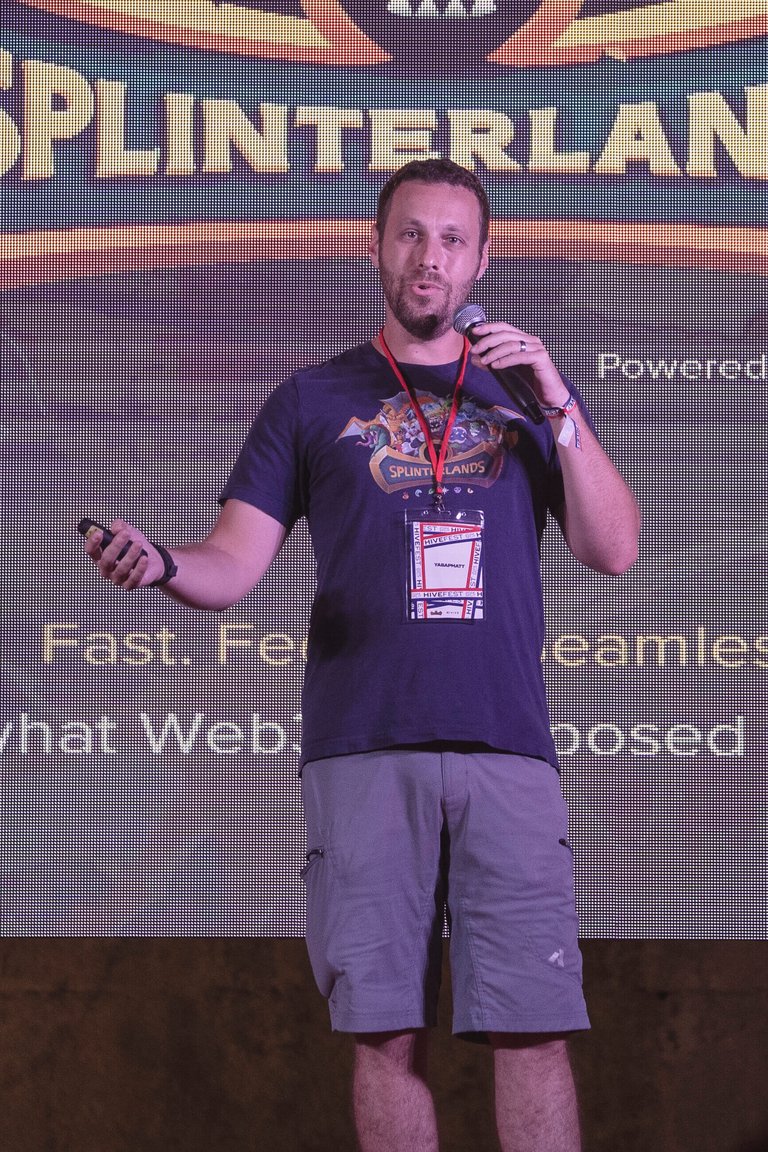
splinterland game - means investment and earn...
I
Nothing to ask, but I will pop in to say Hello :) HELLO!
By the way, if you guys want to earn in $SPS on INLEO, you can chose the SPS token/theme via the Settings Page:
Great reminder ;)
If one would go with the strategy of play, earn and engage as a way of advertising SPS and InLEO, I think it would yield a significant effect.
Is there a community dedicated for SPS and related stuffs?
https://inleo.io/communities/hive-13323?tab=threads
Good afternoon greetings to all present.
feeling sleepy 🥱 now... time to day Good Night lions...
Question
Can one buy shares in SPS maybe a particular percentage of it ?
Kind of like a lease agreement or rent?
Question What gonna happen to the SPT Token - Splintertalk?
Question,
How the integration benefits both communities ?
A question about including this game in the project, will one be able to obtain benefits at the time of playing?
I see the players have some control in the community
Question
Will INLEO has a Specific Sign Up page/theme for Splinterlands Players? Make 'em feel included.
Good Night lions...
Wales on SPS maybe voted for DHF of InLEO's project.
what is this about
You are both on mute
I can hear both of them. Try to refresh your page and rejoin the Space.
This worked by the way thanks a lot.
You're most welcome.
Hi, @solymi,
This post has been voted on by @darkcloaks because you are an active member of the Darkcloaks gaming community.
Get started with Darkcloaks today, and follow us on Inleo for the latest updates.
o.o I can listen
Love the control methods and mechanisms
my question | Are we going to be earning Sps token on our post just like we earn leo token from post & thread @khaleelkazi
Change to the Splinterlands theme and find out ;)
Currently using the splinterlands theme since yesterday, I can see sps in the vote reward section, will I be getting sps as reward as long as I'm using the splinterlands theme and be able to claim in my wallet after day 7
My Question for Matt is what mechanical keyboard he has.
I think the world is evolving and maybe revolving around some things. Having players come, earn and have fun is really cool.
Does the play aspect of SPS has an interface outsiide of hive Blockchain where all these happens.
$SPS is on BSC
What future plans both teams have to strengthen the partnership.
If the token holders are the ones allowed to make decisions, it will inspire others to have the token and enlarge SPS community.
Oh, okay, that's great goal.
I think InLEO is also benefiting very well from this SPS integration. For e.g Buying of Premium, increasing MAUs and many more.
https://docs.splinterlands.com/
So apparently InLEO interface on less than 5 years of optimum activity has drawn the attention of very tangible projects. Wow, this is amazing.
The future is bright for $LEO and $SPS
InLEO keeps getting better and better with this project partnerships.
Question
What kind of games are been played in here, football, basketball or what actually?
https://inleo.io/threads/view/louis88/re-khaleelkazi-k9cpxx39?referral=louis88
Question ❓
What value does SPS provide to InLEO and the tokenomics of hive Blockchain?
Love what im hearing
I was once a regular player about 2 years back before i sold my deck.
What would u tell old, returning players to get them back onboard about the game?
En la X #inleo #splinterlands #hive #bbh #spanish

Question
How can a non-web3gamer be a part of the Splinterlands community?
Will this $SPS token have more functionality in the inleo interface?
Already does ;0
Ok, perfect.
Validator Source Code: Open for Testing!
https://github.com/TheSPSDAO/SPS-Validator
Question
Can one integrate an AI that plays this SPS stuffs ? Anyways getting data is needed for this .
The goal is solid 👍🏿
Can the value of the $SPS go up?
I guess the max should be: AI-Chat Help Bot :D
Wait... There's a mode that does not Allow Bots?!! Since WEN?!!
Well, maybe we dont need AI everywhere? :D
Would Leodex be used in buying these cards?
I would use LeoAi to play
🦁
It has a lot of style.
https://inleo.io/threads/view/louis88/re-khaleelkazi-2cupz3yvf?referral=louis88
A collaboration between the Splinterlands game and Inleo community
https://inleo.io/threads/view/tonya7/re-khaleelkazi-2n1vkcnfw?referral=tonya7
ohh myyyy daysss! 😱
I missed the threadcast 🤦♀️
nyc
You'd love it, it's a promise 😉
https://inleo.io/threads/view/winanda/re-khaleelkazi-fsqekyxf?referral=winanda
Now this sounds more tempting, lol.
Set a reminder for the space
Set a reminder for the space: https://twitter.com/i/spaces/1dRKZddQPEoJB
Done! I think a summary of the comments in X SPACE CAN BE IN THREADS!
What do you think my bro?
What will happen in the future with Splinterlands and INLEO on the same time 🦁
Hello khal, how's it going
Does this look good on me?
10% of your EtH gas fees 😂
Reminder set
We're live!
Yea guys, looks like it's the first chain-chatter of the year
When are we starting actually
https://x.com/i/spaces/1dRKZddQPEoJB
We are live
Conclave Arcana is the next release
Hello everyone, good to be here
Hola Splinterfans and Mufasas (Lions)
ah here we go!
Arwe we on the youtubes as well?
peakmonsters.com/dashboard
Market dip in the January.. what will be in march...
Any prediction friends??
My question for Matt is what kind mechanical keyboard he has.
how SPS will connect to Inleo ??
It's already connected. Just go to your settings page.
Leofinance is already a large community, sps will add to it.
Now you're trying to pull me in, lol. Well, I could try if time permits. https://inleo.io/threads/view/bipolar95/re-khaleelkazi-ppqpfsjg?referral=bipolar95
Playing the Splinterlands game via the lite account without purchasing the spell book
https://inleo.io/threads/view/gargi/re-khaleelkazi-qmyqd5fb?referral=gargi
thankyou @bipolar95 for helping me...
you welcome 🤗
inleo team is really working Amazing..
switched to desktop mode , seems fine a little bit
https://inleo.io/threads/view/coolguy222/re-khaleelkazi-2qnugbfzu?referral=coolguy222
what is the hall mark of play to earn to InLEO vision
You're right. Not everyone earns in a business.
This game is quite time consuming.. as to know about each and every cards in details...
Play to earn, wow, this would be crazy
People will happily pay for a game that provides the entertainment factor is really good... I stopped getting the entertainment part from splinterlands 2 years ago. Hope it becomes better, though.
Don't forget to ask some questions throughout the show! I do audience Q&A in the last 15 minutes
it' time to play again splimterland...
reminder
https://inleo.io/threads/view/khaleelkazi/re-khaleelkazi-v2lclnf7?referral=khaleelkazi
Hope SPS would be in Leodex?
It already is afaik
It already is
https://inleo.io/threads/view/vickvan/re-khaleelkazi-33bi5lmwe?referral=vickvan
All these terms here sound foreign to me
Definitely, it's part of the collaboration process.
https://inleo.io/threads/view/vickvan/re-khaleelkazi-33bi5lmwe?referral=vickvan
What's the tokenomics behind SPS token?
splinterland going to be lions favourite web3 game...
yes, will also give it a try
https://inleo.io/threads/view/gargi/re-khaleelkazi-2wzvuzck5?referral=gargi
https://inleo.io/threads/view/vickvan/re-khaleelkazi-33bi5lmwe?referral=vickvan
can I still participate in splinterlands even if I am not a gamer
Ask more questions! About to enter Audience Q&A!
I may have to consider playing games in Splinterland. They have a lot to offer.
Pros and cons: decisions is like turning a ship but, decisions are not rushed and have alot of support
Matt basically explaining why Splinterlands is resistant to Sybil attack.
Most people don't understand the concept.
Though I agree that people who have more stake in the game, (whales,) are more likely to understand what would work in a game than the average players, so...
https://inleo.io/threads/view/ahmadmanga/re-khaleelkazi-2qbhm6pba?referral=ahmadmanga
En la X #inleo #splinterlands #hive #bbh #spanish

combat games, like the mortal combat
https://inleo.io/threads/view/vickvan/re-khaleelkazi-2ht7szfjb?referral=vickvan
Do You think SPS token can be listed on Exchanges?
Whats the total supply of SPS token
?
As it gets bigger, why not
https://inleo.io/threads/view/vickvan/re-khaleelkazi-2cryuj1fb?referral=vickvan
hello all
hope I am not late
The ia is dominating in everything.
https://inleo.io/threads/view/louis88/re-khaleelkazi-rkzbji7s?referral=louis88
Damn it.... I'm on a film set and can't listen
syn-er-GYYYYYYYYYYYYYYYYYYYYYYYYYYYYYYYYYYYYYYYyy
And one day Leo will get listed on Binance and coinbase
InLEO already have a big fan base, SPS do too, it's a big win for both communities.
Yeah Inleo got the audience and as such a great source for publicity
https://inleo.io/threads/view/vickvan/re-khaleelkazi-gzkzjwyw?referral=vickvan
INLEO x Splinterlands Conversation
https://inleo.io/threads/view/tonya7/re-khaleelkazi-2n1vkcnfw?referral=tonya7
Of course it is and it will be the best.
https://inleo.io/threads/view/falcon97/re-khaleelkazi-f5e1ozd4?referral=falcon97
Thanks for the heads ups in here, it was worth it. Thanks khal, I bow.
Yeah, this year will be great.
Great show guys, would be looking forward to a good comeback to the Splinterlands community
Like moments like this
$LEO
$SPS
It remains to continue working and betting.
Bye guys, a good way to start the year indeed. Awesome collaboration between two giants... Inleo x Splinterlands
Alright, thanks for the show. It was a great one.
This is more exciting.. more instigations more engagement
I can see the relationship between the Inleo and splinterlands is very important to growth of the community
I'm missing it all... but I will listen later. I'm on the set of Law and Order right now. can't really listen. Sorry
Inleo and Splinterlands is a great idea.
Two large communities and the splinterland people are already on Hive, untapped captive market!
#golions
#splinterlands
Here is an episode summary
https://inleo.io/threads/view/mightpossibly/re-leothreads-2p5kg7bpt?referral=mightpossibly
This year will be amazing
WELCOME TO THE FOOD TALK ON LEO SEASON 3
Hello foodie Lions 🦁! Happy Wednesday. Welcome to today's show. 🥗🍲🫕
This is the #threadcast for Day 212 of the #foodtalk on Leo, 22/1/2025. It's time for some meal inspirations and food conversation. Don't forget to use #foodtalk in your comments.
Discussion
More about food with tips and tricks will be dropped in the threadcast. Upvote the comments you find interesting & connect with others. Let's have fun. #foodie
Julian Sisofo- 3 Hour Neapolitan Pizza! (Easiest Recipe). #foodtalk #neapolitanpizza #pizza #pizzarecipe
!summarize
@winanda needs to do at least 25 summarize videos today.
Oh, dear Task has challenged me now. Lol. I love that. I will try and put up the ones I can now and hopefully, will be back at night to add more.
Welcome friends to today's #foodtalk on Leo, Day 212. It's time for some food conversations. Share your thoughts and experiences.

Have you seen or heard about any weird food or snacks, like one made with insects? 🤭 #foodtalk
Seek Wonder- Africa Mosquito Burger. #foodtalk #africamosquitoburger #mosquitoburger
!summarize
Cuoredicioccolato- Homemade PINEAPPLE WINE with 11.7% of ALCOHOL. #foodtalk #pineapplewine #pineapple #alcoholicwine #pineapplealcoholicwine
!summarize
Do you love red velvet cakes? What's your favorite cake? Check out this thread below 👇 about the red wine red velvet cakes I made. #foodtalk #redwineredvelvetcake #redvelvetcake #cake
https://inleo.io/threads/view/winanda/re-leothreads-2au7spwya?referral=winanda
Cuoredicioccolato- Make and Bake the Best Homemade Pizza. #foodtalk #pizza #homemadepizza
!summarize
With Dr Reza Z- How to Make Sauerkraut at Home: A Probiotic-Rich Recipe. #foodtalk #Sauerkraut #Probiotic #recipes
!summarize
Cooking Everyday -- After I discovered this recipe, I make this for breakfast almost everyday!
#foodtalk #foodie
!summarize
!summarize #food
!summarize #food
!summarize #food
!summarize #food
6 hours of meeting today! What a waste of time! Why is corporate America so obsessed with meetings??
Good grief! That's insane. How do they get any work done at all? I think it's a control thing.
yeah. I think leadership likes to feel busy.
Why was it a waste of time, is it not meant to discuss the important matters?
most meeting I’ve found to be for show and to fill up leaderships time. A few are jmportant but most are a waste of time in my experience.
Because they think wasting time is productive? I don't know, I never understood it either. Glad I don't work for Apple anymore and have to deal with any of that corporate cult shit.
To carry out the exploitation of its employees!
GM! 🦁
Oh, there are some meetings that are like that and honestly, I dislike such.
just an excuse to fill up time
tell me about it
Having meetings is not a problem , but having meetings with no good decisions made is really a big problem
It is really so sad
it makes them look busy
Today is one of those days that the only way to get past it is to go through it. Putting on my big boy trousers
Its also hard for me, I hope you got over it
Stay well
Best of luck to you.
There's no reverse in life, each day is a journey you must make no matter how the condition looks like.
True. Although most days you can opt out of much of what life throws at you. Today, I don't have the option. There are plans that depend on follow through today.
You are absolutely right, I support you!
I'm a Lion now 🦁
From 9K to 27K today
quite a jump! good job!
It was a leap of faith 😂
Thank you so much for the support
Congratulations 🎊
That is Great
Ape!!
wow you do it man 😅
Awesome
Woah, thats crazy af. godspeed
"I am creating an economic simulation to give people a first-hand experience of what it would be like to live in a world without the systemic use of force." - Ross Ulbricht
The implementation may have been imperfect or naïve, but the goal of the Silk Road was to further a peaceful, voluntary world.
That's the ultimate goal of the libertarian movement, and of cryptocurrency: a voluntary and peaceful world.
There is so much more nuance involved, and this is so much harder of a goal than many of us realized. And in some ways, the world's structure will always kind of look like today with courts, police, laws, and so on.
But I believe that by following this vision, we can make our world a vastly better place.
We're doing it. Thanks Ross! 🫡
#crypto

So glad he got the pardon.
Same! Feels pretty surreal.
It is a brand new world.
The 4th turning is finally here.
Yep!
Yes, it will be a gradual process but having this vision and taking the right steps will get us a better world. We're anticipating.
It'll be great to get there.
Prime Target on Apple TV+ dives into a mathematician’s quest to crack a prime number code with global cybersecurity implications, though its intellectual premise is strong, the show leans heavily on predictable action tropes, the series struggles to balance its scholarly intrigue with overused conspiracy twists, leaving its potential untapped despite solid performances. Read More in ➡️ #linkincomments , #primetarget, #appletvplus, #tvonleo, #skiptvads , #randommedianews
Read More: https://screenrant.com/prime-target-tv-review/
#skiptvads
🦁
An example of calculating the intrinsic value of Palantir ($PLTR) has been shared within The Profit Academy.
For anyone who believes this stock may be overpriced, checking this out could be beneficial.
Upgrading will provide access.
Enquete sobre a governança da Hive-BR.
Saiba mais lendo a Proposta 13 ou pelo nosso Discord!
#hivebr #hbr
Lendo a Proposta 13
Hive BR IS A BIG PROYECT MY FREN! 🦁
Bank account vs Bitcoin wallet
#memes #cent #ass #bank #bitcoin
nice assets ;)
!INDEED !BBH
pump those bags, lol
I try!
!LOL !BBH
lolztoken.com
No, but April may.
Credit: bitpizza
@thelogicaldude, I sent you an $LOLZ on behalf of chaosmagic23
(1/10)
Delegate Hive Tokens to Farm $LOLZ and earn 110% Rewards. Learn more.
So next stop 50K
Hmm 🤔
Let's do this
I could do 2000 right now, but I still calculating
I think Leo is at a good price to buy in unless you have some emergency stuff to take care of. If not jump in my friend
I bought already, but still thinking if I should keep it liquid or stack them.
Well, I'm almost to 1000...it's a start.
Its a very good start.
NICE INFO; THANKS AND HAVE GOOD DAY :P
👍
yeah same here.... next step by the end of the year!
lets do it together then
I love it when I have the opportunity to send positive feedback to my team :)
Awesome, good day bro!
Thanks, you too!
What's your team into?
Software development, mostly
That's great. I assume you are an engineer.
Yup! But currently working as a project manager
and obviously we all love the positive feedback
+200 "paying" followers in 4 days
More experimentation needed! Link with me if you want to be on this #hive broadcast!
what is this about?
Me following some "useless" strategy on X to get more attention, and then I can use that to expose hive a bit more.
The target is to get some of these users that just want to get verified followers. Then eventually critical mass will allow some of my content to be viewed and followed by "real" people. Etc etc..

Wouldn't know. I deleted all but the Hivelist and Blocktunes accounts on X. I only care about my followers and impressions on #inleo these days.
You are doing the right thing...
I am still teaching light force Jedi people!
Alright guys I did it. I just bought double of my current Leo power and now about to stake.
🦁
A lion coming up
nice!
Well played 👏👏🔥🦁
Hey Anderssinho, it's been a while.
So I upvoted tokenized society with a 100% of my new power.
I think I'm at 80% voting resource.
haha 😂
Yes I do
LOL
Very good friend, each time that vote taking power.
one Leo at a time
Well played
jajajaja
it's good for him or her lol 😂
tried it on you too
then it's good for me too lol 😂
Thank you 🙏
When will you jump on the ai summaries bandwagon again? 🦁
Pretty soon ma men trying to get some stuff out of the way then I would subscribe to @mightpossibly and continue feeding our baby LeoAI
You can try again here to see how much percentage got noked.
I don't follow
That's a local slang meaning remove.
Update on Swapping:
Swapping has resumed operations, but Solana is currently out of service.
For Swappers:
Quotes for Solana are not available while a solution for the congestion issue is being implemented. All other routes are operational!
For LPs:
Deposits, withdrawals, and quote offerings are available for all assets except those in SOL.
Further updates on the progress with Solana will be provided. Thank you for your understanding!
what a beautiful weather for South Florida. I think it is a little too nice.
#cold
🥶
NICE IMAGEN!
🦁
THe kind of calm weather that I love so much
loving the weather, actually wishing I was there now
The United States Regular Monument at Gettysburg National Military Park circa 1959.
#filmphotography #vintage #gettysburg
For more photos from this set, see the full post here: https://ecency.com/photography/@darth-azrael/vintage-photos-lot-3-269
According to CryptoQuant's survey, most crypto investors are young, aged between 25 and 44, with nearly 80% holding a college degree.
Additionally, 89% are male, and most invest less than $10,000, favoring Binance.
Lol about everything here is true except for the Binance part for me.
That may also be true, binnance really got a lot of users who invested crypto on the platform especially people from Africa.
Interesting stats. Lots of young men hedging their bets against banks.Thanks for sharing. Is there in anything about women in the same age group?
I believe most women are still skeptical about investing in crypto.
DeFAI project, QUAIN was up as much as 100% today with a market cap of only $4 million. In-and-out trades in abundance in DeFAI! #cent #sapphirecrypto
Question: What do you do to earn #crypto?
For me, I earn here on $HIVE and #inleo in several ways: Posting, curation, Hive-Engine witness, and staking.
I also trade $BTC and $ETH futures, and loan out USDT on Aave.
Then of course, I am earning $DOGE $LTC and $XMR through mining and generally flip that into either Hive, USDT, or the new plan, buy more solar panels and miners!
Then I also trade crypto related stocks through a family hedge fund and earn my dollars that way, that I am turning into more miners...
Mainly posting, staking and occasional trading
$PEPE INTO HIVE IS VERY AWESOME FRIEND! 🦁
$DOGE is the only memecoin for me! I can deposit it directly into Tribaldex using SWAP.DOGE then swap it for HIVE and power up, this lets me earn more HIVE/HBD and LEO through delegation!
i do futures trading
What goes around comes around... and often from secret and undisclosed vessels of power... #cent #sapphirecrypto
Today in Hollywood:
GENERATE/EARN CRYPTO (GLINT) INTO PVP
#splinterlands
$SPS and $LEO
I want to do a good Leo buy in a couple of minutes. Those who can read chart. Is 0.35 good or I should wait a while for price to drop a little?
#askleo
I wouldn't wait if I were you, tbh.
Okay 👌
I don't Understand the chart well
But I believe in dividing the investment money while price is dropping.
My name is Matthew and I am excited that I found this amazing place where I can socialize and earn , thank you to the team behind it.
#newlion
Welcome to INLEO. 🚀
welcome mattewh
Creen que sea buena idea un proyecto en "Spanish"? #cent #inleo #nfl
#spanish 🚀
$LEO PRECIO Y TAMBIEN! $BTC PRECIO!
Nice information!
Do you really think the pardon is a good one ??
US counties
Michael
Beastmode, but still a risky venture, with all that lending to buy BTC. If BTC drops below 65K, MSTR will have to start selling. That’s a systemic risk for BTC. At least one to take into consideration!
Awesome!!!!
Microstrategy Doing Great Investment
It might be worth sharing this insight...
The most powerful AI tool in existence is actually your own subconscious mind.
Bitcoin is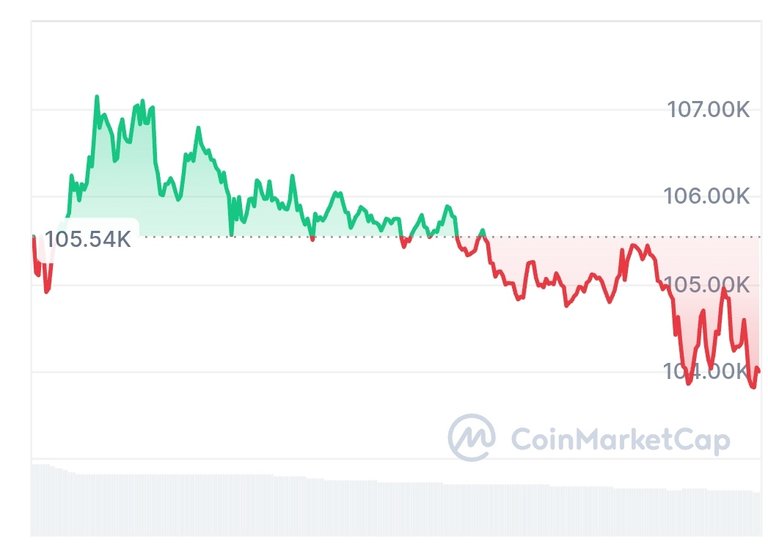 trading below 106k line today
trading below 106k line today
Good afternoon. Money is a tool, not a destination; it’s what you do with it that defines your path to freedom and success.
🚨BREAKING: A pardon has been granted to Ross Ulbricht by Trump, marking a significant first step in crypto policy.
Optimism is key.
"We have a choice everyday regarding the attitude we will embrace for that day." - Charles Swindoll
#quote #inspiration #life #leothreads
TRUE! I'M AGREED WITH YOU MY DEAR FREN!
Ingresar en una batalla en Splinterlands #splinterlands 🦁

Olds News..
Aqui consegui optra imagen un poco mas hermosa para ser exacto! #spanish
🚀

Nice imagen!
Navigating the crypto landscape is incredibly challenging. After over a decade, the complexities persist.
CRYPTO! 🦁
True financial freedom isn't merely about having a large sum of money saved.
It's the ability to decline an opportunity without the stress of bill payments looming over you.
That's what true wealth looks like.
INLEO IS FINE FR THIS ONE MY FREN!!! 🦁